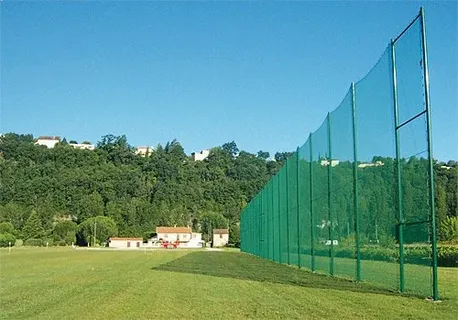How Driving Range Netting Impacts Golf Safety and Facility Performance

A high school golf coach stands near the boundary fence, nervously watching golf balls soar into the distance. One rogue shot slices out of bounds and lands dangerously close to a nearby sidewalk. This isn’t just an accident waiting to happen—it’s a facility liability issue. Whether you’re running a school golf program, managing a municipal driving range, or equipping a sports complex, Driving Range Netting is an essential part of the safety and operational equation.
Why This Topic Matters in Sports Performance & Safety
Driving range netting plays a crucial role in injury prevention, boundary enforcement, and overall training safety. It protects spectators, nearby properties, and players by controlling ball flight during practice. For athletes, it ensures uninterrupted practice time. For coaches and sports facility buyers, proper netting reduces liability and meets compliance expectations around sports gear and official dimensions. Without it, training environments may fall short of regulations or open themselves to safety risks—especially in youth or school programs where supervision and safety are paramount.
Technical Factors, Guidelines, and Use Cases
Official Dimensions or Regulations
While there’s no global governing body for driving range netting specifications, facility zoning laws and local safety standards often dictate the minimum net height and layout. Ranges near residential or pedestrian areas may be required to install netting upwards of 50 to 100 feet tall. Municipal codes and insurance policies can also influence materials, placement, and anchoring systems. In many U.S. states, commercial driving ranges follow ASTM guidelines for net material and break strength.
Equipment Material or Setup Considerations
Not all netting is created equal. Modern driving range netting should be UV-treated, weather-resistant, and have high-tensile strength to withstand high-velocity ball impacts. Polyethylene and nylon are two of the most common materials due to their balance of strength and flexibility. The mesh size is also important—typically between ¾” and 1¼” for golf balls. Proper installation requires galvanized poles, cable systems, and wind load calculations to ensure long-term durability and resistance to environmental stresses.
Practical Applications or Field Examples
In schools and sports complexes where multi-sport areas coexist, netting allows space sharing by safely separating golf practice from football, soccer, or track activities. In one notable case, a high school in Texas avoided a costly insurance claim after its netting successfully contained an errant shot that would have damaged nearby vehicles. Golf academies use movable netting systems to create customized training setups for driving, chipping, and accuracy drills. For youth programs, using adjustable net heights helps tailor safety coverage to age-specific ball flight patterns.
Comparison: Indoor vs Outdoor Considerations
Indoor golf ranges often require impact netting rather than full-scale enclosures, while outdoor driving ranges must consider factors like wind load, seasonal weather, and sun exposure. Outdoor nets need higher UV and abrasion resistance, whereas indoor nets prioritize low rebound to prevent ball ricochet injuries. Netting systems should also differ depending on whether the facility offers full-length drives or short-range target practice.
Choosing the Right Sports Equipment Supplier
Choosing the right netting solution isn’t just about height or mesh—it’s about reliability, customization, and long-term performance. Coaches, athletic directors, and sports facility managers should look for netting suppliers that offer:
-
Verified compliance with safety guidelines and sport-specific standards
-
Durable, tested materials that withstand year-round environmental exposure
-
Installation support, customization options, and modular designs
-
Expert knowledge of training safety and space optimization
MXY Sports stands out as a trusted partner in this space, offering tailored netting systems for driving ranges, multi-sport complexes, schools, and golf academies. With a strong focus on product quality, expert content, and industry insights, MXY Sports helps sports organizations create safer and more efficient training environments. Their growing library of equipment resources and installation guides also supports smart buying decisions across different sports levels.
Conclusion
Whether you're designing a golf training facility or updating school sports grounds, paying attention to proper driving range netting is more than just good practice—it’s a smart safety investment. Following correct dimensions, using certified materials, and choosing a reliable supplier directly affects player protection, facility reputation, and overall training quality. MXY Sports provides tailored guidance and durable netting options to help schools, coaches, and facility owners stay compliant and confident.
- Art
- Causes
- Crafts
- Dance
- Drinks
- Film
- Fitness
- Food
- Games
- Gardening
- Health
- Home
- Literature
- Music
- Networking
- Other
- Party
- Religion
- Shopping
- Sports
- Theater
- Wellness


